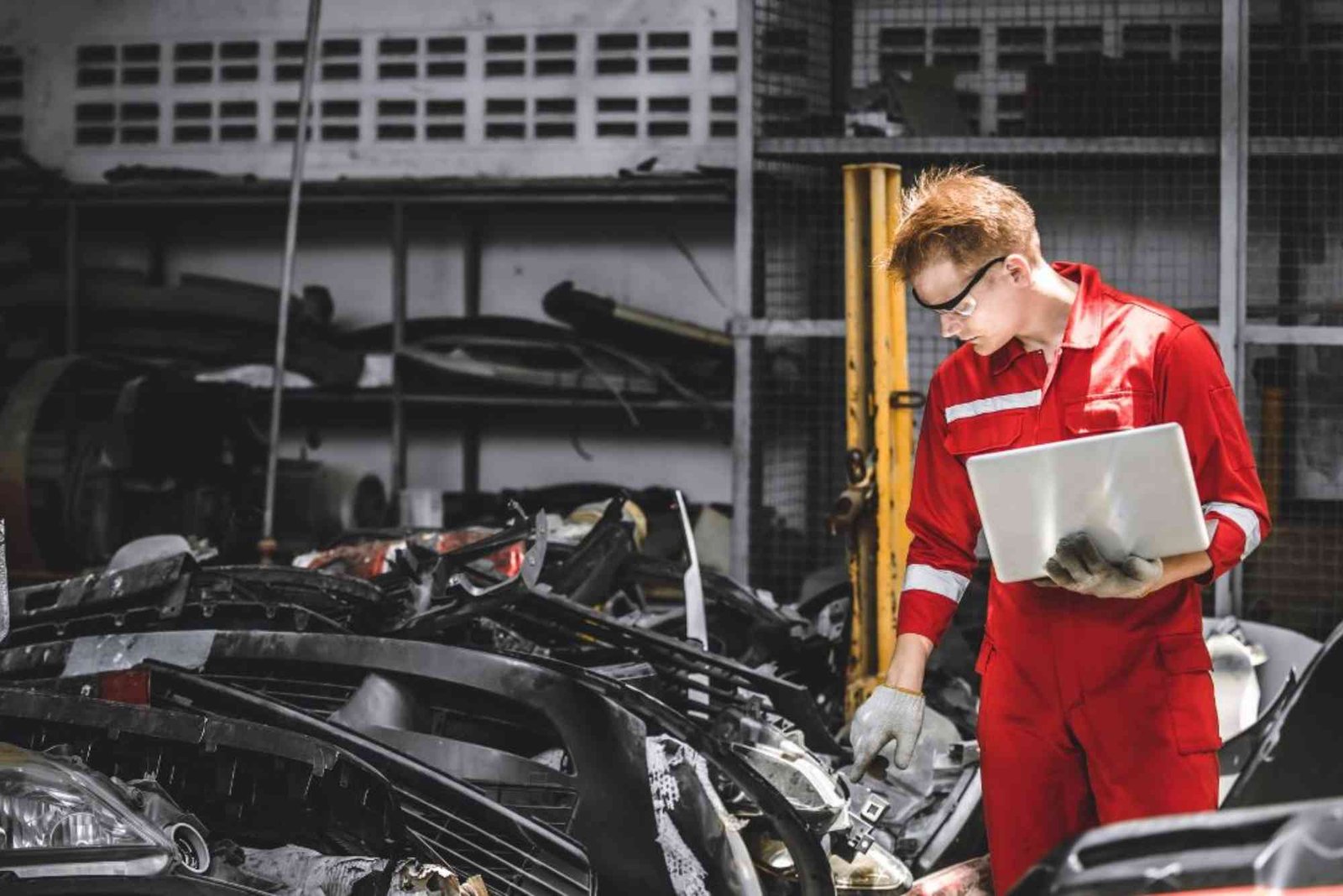Introduction
Starting an auto spare parts business in India can be a highly rewarding venture, especially given the rapid growth of the automobile sector and increasing vehicle ownership across the country. However, entering this field requires practical planning, a strategic approach, and market awareness. In this guide, we will discuss Practical Tips: To Start Auto Spare Parts Business In India that will help new entrepreneurs build a profitable business model. From understanding market demand to managing inventory, we’ll cover all aspects necessary for a successful start.
India’s automobile industry is one of the largest in the world. With millions of vehicles on the road and a continuous rise in personal and commercial transport, the need for quality spare parts has increased significantly. The spare parts industry includes everything from engine components, filters, and brake pads to electrical parts and accessories. If you plan to invest in this field, practical insights and industry know-how can help you establish a business that stands out from the competition.
Understanding the Auto Spare Parts Market in India
Before you start, it’s essential to understand how the Indian auto spare parts market operates. The industry is broadly divided into two categories: Original Equipment Manufacturer (OEM) parts and aftermarket parts. OEM parts are produced by the vehicle manufacturer, while aftermarket parts are made by third-party companies. Both have strong demand, but aftermarket parts offer better profit margins and more flexibility for small businesses.
The Indian automobile ecosystem is also supported by robust e-commerce platforms, regional distributors, and local repair workshops. These sectors ensure consistent demand for spare parts. Moreover, with the rise of electric vehicles and sustainable transport, new opportunities are emerging in specialized parts like batteries, motors, and controllers. Understanding these trends will help you plan your business strategy effectively.
Choose the Right Business Model
Selecting the right business model is a critical step. Depending on your investment capacity, you can either start a retail shop, an online store, or a wholesale distribution setup.
A retail shop works best in densely populated areas where there’s high vehicle traffic. You can cater directly to mechanics and vehicle owners. On the other hand, if you have sufficient capital, becoming a distributor allows you to supply bulk parts to retailers and garages, ensuring steady profits.
The third option, e-commerce, is fast gaining traction. Online spare parts stores attract tech-savvy customers who prefer convenience and doorstep delivery. By combining digital sales with local distribution, you can maximize your reach and diversify your revenue sources.
Location and Infrastructure Planning
Location plays a significant role in your success. Ideally, choose an area with high automobile activity, such as near industrial zones, transport hubs, or main roads. Your shop or warehouse should be spacious enough to store a wide range of parts securely.
Good infrastructure is not just about physical space. You need an efficient inventory management system, proper shelving, and barcode tracking to ensure quick access to products. Also, maintain a clean, organized space—it builds trust and professionalism among customers.
Licensing and Legal Requirements
Before launching operations, ensure that all legal requirements are fulfilled. You must register your business entity (sole proprietorship, partnership, or private limited company) and obtain a GST registration number. You’ll also need trade licenses from local authorities and any required permits for import or wholesale activities.
If you plan to import parts, get an Import Export Code (IEC) from the Directorate General of Foreign Trade. Compliance with legal procedures will prevent future complications and help you operate smoothly in the market.
Establish Reliable Supplier Relationships
Your suppliers are the backbone of your business. Choose suppliers with a proven record of delivering high-quality parts. Building long-term partnerships ensures you receive consistent products at competitive prices.
You can import parts from global manufacturers in China, Japan, or Germany, or partner with domestic producers in India. Always check for quality certifications, warranties, and authenticity. Substandard or counterfeit parts can harm your reputation and lead to customer dissatisfaction.
Build a Diverse Product Portfolio
Customers prefer businesses that offer a wide range of products. Include essential spare parts such as filters, brake pads, engine oil, batteries, and electrical components. Also, consider stocking specialized items for different vehicle types—two-wheelers, cars, and commercial vehicles.
Keep an eye on market trends. With the growing demand for electric and hybrid vehicles, adding EV-related parts can give you a competitive edge. Offer both branded and non-branded options to cater to customers across different budget ranges.
Marketing and Branding Strategy
Marketing is crucial for attracting customers and building trust. Start by choosing a memorable brand name and logo. Then, establish a strong online presence through social media, local listings, and your website. Sharing informative content about vehicle maintenance and part replacement can build authority and attract organic traffic.
Offline marketing also remains effective. Distribute flyers, advertise in auto magazines, and sponsor local automobile events. Partner with nearby garages or workshops—they can recommend your store to vehicle owners. Word-of-mouth marketing is powerful in this industry, so focus on delivering exceptional service that customers will talk about.
For additional insights on this topic, you can refer to a Related Automobile article that provides in-depth analysis and expert guidance.
Manage Inventory Efficiently
Inventory management determines your profitability. Overstocking leads to wasted capital, while understocking results in missed sales opportunities. Use digital inventory management software to track sales trends, reorder levels, and supplier performance.
Categorize parts based on demand and value. Keep fast-moving items in large quantities and maintain a smaller stock of rare or slow-moving parts. Regular audits ensure accuracy and prevent losses due to mismanagement or theft.
Customer Service and After-Sales Support
Customer satisfaction is the foundation of long-term success. Train your staff to assist buyers with part selection and installation guidance. Provide warranties and return options where applicable.
Offering after-sales support builds credibility and increases repeat purchases. You can even provide technical advice or tie up with local mechanics to offer repair services. These extra efforts help your business stand out in a competitive market.
Embrace Digital Transformation
Digitization is revolutionizing the auto spare parts sector. Create a professional website that lists your products with images, specifications, and prices. Implement online ordering and payment facilities.
Social media channels like Facebook, Instagram, and LinkedIn are powerful tools to promote offers and connect with customers. You can also join automobile marketplaces and directories to increase visibility.
Leverage SEO and Google Ads to drive traffic to your site. If you’re new to SEO, explore official resources such as Learn more to understand how to optimize your content and reach potential buyers effectively.
Financial Planning and Investment
Starting an auto spare parts business requires careful financial planning. Your initial investment depends on the business scale—small shops might need ₹5–10 lakhs, while wholesale operations may require ₹20 lakhs or more.
Account for costs such as rent, licenses, supplier payments, marketing, and staff salaries. Maintain a financial buffer to handle fluctuations in demand. Proper bookkeeping and expense tracking are essential for long-term sustainability.
Challenges in the Auto Spare Parts Industry
Like any business, this field has challenges. Competition is intense, margins can fluctuate, and counterfeit parts are a constant risk. Moreover, logistics issues can cause delays in product delivery.
To overcome these obstacles, focus on quality control, transparent sourcing, and customer loyalty programs. Building a trustworthy reputation is the best defense against competition.
Future Trends and Opportunities
India’s vehicle population continues to grow, and so does the demand for spare parts. The rise of electric vehicles, smart mobility, and sustainable technology will shape the future of this industry. Entrepreneurs who adapt to these trends early will have an advantage.
Online spare parts marketplaces, subscription-based services, and AI-driven inventory systems are emerging opportunities. Keeping pace with technology ensures your business remains relevant in the years ahead.
Starting an auto spare parts business in India can be a highly profitable journey if approached with planning and precision. By applying these Practical Tips: To Start Auto Spare Parts Business In India, you can establish a brand that customers trust and rely on. Focus on quality, build strong supplier relationships, and embrace technology to enhance efficiency.
If you’re ready to take the next step, explore more about How To Start Auto Spare Parts Business In India and get professional insights to strengthen your business foundation. Start today—because the automobile industry is evolving, and those who take action now will lead tomorrow.
FAQs
How profitable is the auto spare parts business in India?
It’s highly profitable, with average margins of 20–40%. Profitability depends on supplier deals, product demand, and location.
What licenses are required to start this business?
You’ll need GST registration, trade license, and possibly an Import Export Code if you plan to import parts.
How can I find genuine suppliers for spare parts?
Look for certified OEM or aftermarket suppliers, attend trade fairs, and verify credentials before signing any agreement.
What is the minimum investment required?
A small-scale shop can start with ₹5–10 lakhs, while a wholesale or online setup might need ₹20–25 lakhs.
Can I sell auto spare parts online?
Yes, selling online is an excellent strategy. You can create an e-commerce store or join platforms like Amazon or Flipkart.
What are the risks involved in the auto spare parts business?
Counterfeit parts, price fluctuations, and supply chain disruptions are common challenges, but effective management can minimize risks.












